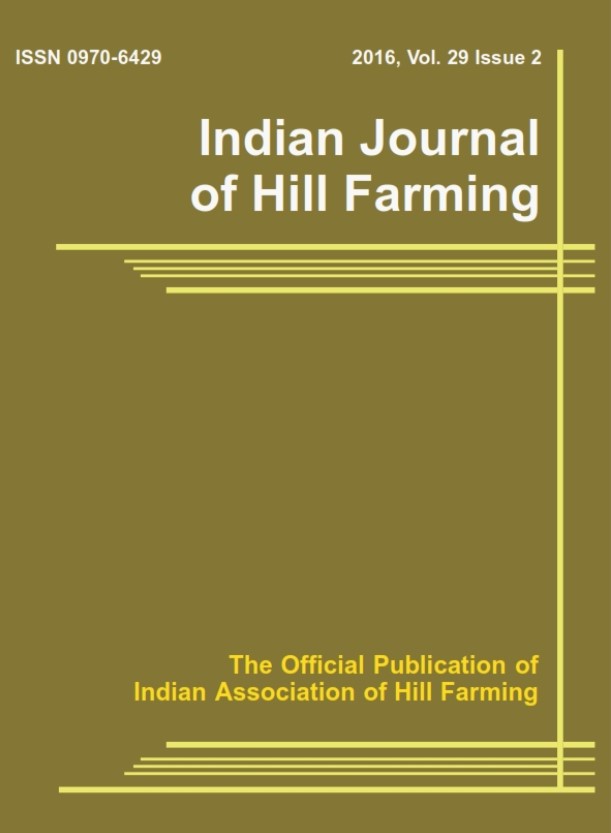Evaluation of Biotic and Abiotic Stresses in Cereal and Vegetable Crops of Himachal Pradesh
Keywords:
Biotic & abiotic, climate change, economic evaluation, cereals, vegetablesAbstract
The findings of a study on evaluation of biotic and abiotic stress in major cereal and vegetables carried out in most vulnerable district Mandi of Himachal Pradesh reveal that all the biotic factors collectively accounted for a economic loss of worth Rs 78763 (62.82%) per ha while the inadequate and untimely availability of the most important abiotic input, the irrigation water caused loss of Rs 46613 (37.18%) per ha in the study area. The total economic loss due to biotic and abiotic stress was estimated at Rs 183984 per ha in Zone I followed by Rs 137097 and Rs 28910 per ha in zone III and Zone II, respectively with overall average of Rs 125376. The loss occurred due to biotic stress was higher in all the zones and it varied from 62.61 per cent in zone I to 79.62 per cent in Zone II with an average of 62.82 per cent. However, the economic loss per ha on account of abiotic stress in zone I, zone II and zone III was estimated at Rs 68800 (37.39%), Rs 5891 (20.38%) and Rs 43771 (31.93%), respectively. The higher absolute loss in zone I was due to the large scale cultivation of tomato (30.98% of cropped area) in Kharif and cauliflower (33.97% of cropped area) in Rabi season as cash crops perishable in nature and prone to insect pest and diseases. The findings, therefore, invite the attention of breeders to develop improved cultivars having less water requirement and resistant to climatic stresses especially for maize, cucumber, cauliflower, tomato, etc.




